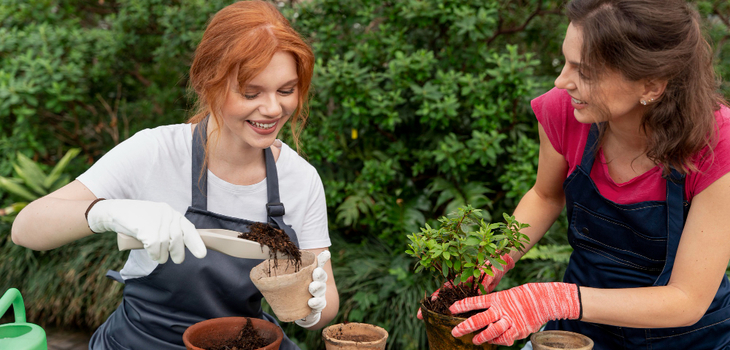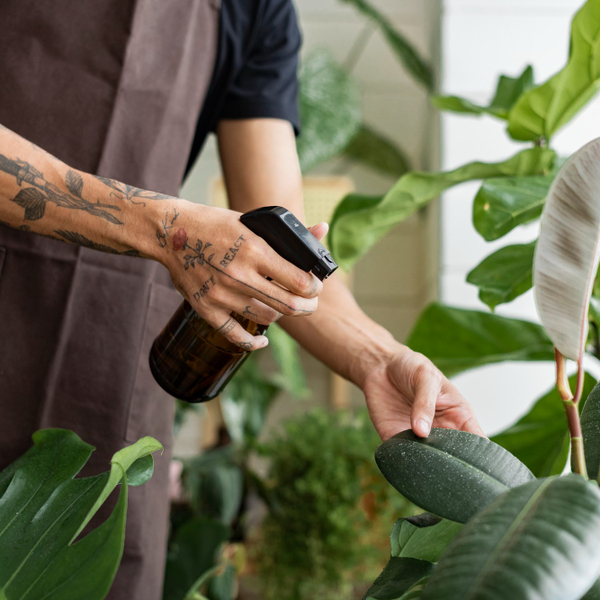Companion Planting: Maximizing Growth and Minimizing Pests

Nothing beats letting the plants assist you in your gardening activities, wouldn’t you agree? Companion planting is a form of gardening involving planting different crops for mutual benefit.
It’s also quite an effective, natural way of planting for pest control. Specific plants prevent pests from disturbing other plants, making companion planting a viable gardening method.
So, if you just moved to a new place and want to set up your new garden, or if you're revamping it and making it more fruitful with less pesticide use, companion planting is for you.
This article will discuss how companion planting can benefit your garden.
As much as companion planting isn’t a foolproof way to ward off pests from your garden, it’s still a way to lessen pesticide use, which is healthier for you. Here are the benefits you get when you use this gardening method.
Pest Control
Mother Nature has created a situation in which specific, strong-smelling herbaceous plants can ward off pests from other plants. For instance, the smell of plants like mint and rosemary repels aphids and cabbage moths.
Thus, companion planting is an effective way to control pests. If you haven’t tried this gardening method, it’s time you did.
Pollination
Planting flowering plants close to your vegetables attracts pollinating insects such as butterflies and bees. Pollination makes your vegetables produce more fruit.
As pollinating insects transfer pollen between plants, this makes for an improved production of fruits and, ultimately, an increased harvest for you.
Improved Soil Health
Companion planting is also a natural way to support the soil health of your garden. You can organize your plants to produce a bountiful harvest.
For instance, plants like legumes (beans, peanuts, peas) get nitrogen from the air and spread it to surrounding plants. This ensures plant pairing for growth and makes the soil more fertile.
Improved plant Health
Studies show that some plants can release compounds that suppress fungal diseases in neighboring plants.
For instance, when chives are planted near tomatoes, they help prevent fungal diseases such as blight.

Trap Cropping
This gardening technique is a companion planting method that involves using a crop as a sacrificial lamb to lure pests away from your main planted crops. For instance, planting nasturtiums near your tomatoes can attract aphids.
Thus, the aphids will feed on the nasturtiums instead of your tomatoes, keeping your main crops safe. When the trap crop becomes incredibly infested, you can remove and destroy it to curb the pest population in your garden.
Confusion planting
In companion planting, there’s such a term as confusion planting, and as the name suggests, it is a way of planting crops in your garden in a way that makes it harder for pests to find their favorite food source.
For instance, if you plant strong-smelling herbaceous plants like mint and basil around your cabbage, it can confuse cabbage moths, making it harder for them to locate your cabbage plants and lay eggs on them.
Weed Suppression
Companion planting is also a way to suppress weeds in your garden. You can plant specific fast-spreading, low-growing crops, like clover or thyme, to form a dense cover over the soil.
This cover over the soil makes it difficult for weeds to grow. This saves you the trouble of manual weeding and lessens your daily garden workload.
Reduced Water Needs
Certain plants help retain moisture in the soil. Examples of such plants include squash and pumpkin.
This is especially beneficial during hot or dry climates. By minimizing evaporation, you won’t need to water your garden frequently, reducing your gardening activities.
Harnessing the Power Of Companion Planting in Your Garden
To harness the power of companion planting in your garden, here are the steps to take:
Do Your Research
Before you begin companion planting, research the suitable companion plants for the type in your garden. You can find your garden's soil type online and learn how to start.
However, here are some investigative techniques to discover your soil type:
- The Feel Test: To do this, tightly hold a handful of your garden’s soil in your hand and feel the texture. Sandy soil feels gritty, clay soil feels highly sticky, and loamy soil feels smooth even though it crumbles easily.
- Visual Inspection: Your eyes can help you determine the soil type in your garden. Sandy soil looks coarse. Clay soil appears dense, and it cracks easily when dry. Loamy soil appears crumbly and has a mixture of sizes and colors.
- Professional Soil Testing: To have a detailed soil analysis, you can send a sample to a lab for testing. This will provide ample information about your soil, such as its pH, nutrient level, and other characteristics.
This will also help guide your companion planting strategies.
You should consider sunlight needs, mature plant sizes, and certain plants' chemical effects on preventing pests.
Sketch Your Garden on warding
Sketch out your garden bed. This will help you position your plants for maximum sun exposure.
Here’s a simple process to sketch your garden bed:
- You’ll need paper, a pencil, and a ruler to begin.
- Then, you’ll have to draw your garden bed outline to scale.
- While measuring and drawing your garden bed, include trees, fences, and walkways to ensure everything is captured.
- After measuring and drawing, divide the bed into sun exposure sections—mark each section as ‘full sun,’ ‘part shade,’ or ‘full shade.’
- Include pathways in your garden if you’d like to have them in your sketch.
- In your bed sketch, mark plant placements slightly with circles/shapes. This gives you an idea of where each plant should be situated. However, you should know that tall plants thrive best at the back, and spreading plants need space to grow.
You can also add creativity to this process. There are also pre-made garden layout templates and tools online.
Choose Your Companion Plants
To effectively carry out companion planting, you must select various plants that offer different benefits, such as pollination attraction, pest control, nitrogen fixation, etc.
For instance, planting basil near tomatoes helps ward off some pests that feed on tomato plants. The scent of onions repels carrot flies. Thus, it’s quite beneficial to have onions near your carrot plants.

Garden Space Optimization
To optimize your garden for space, you can:
- Interplant fast-growing crops between slower-growing vegetables.
- Grow some vegetables, flowers, or herbs in pots on balconies and patios.
- Go vertical using walls, fences, and trellises to support climbing plants such as beans, squash, peas, and cucumbers.
These are a few strategies you can use to optimize your garden space.
Understanding The Benefits Of Companion Planting
One practical, sustainable way to preserve the fertility of your soil and increase your garden's harvest is to embrace companion planting.
The benefits far outweigh the risks.
With companion planting, you get to:
- Reduce pests and diseases in your garden.
- Preserve your soil’s fertility.
- Increase your garden’s annual harvest through pollination.
- Reduce your gardening workload.
- Maximize your garden space.
- Cut down on frequent weeding.
Companion planting should be your first choice if you’re considering a new style. Its practical and natural approach requires less effort, making it a feasible option for any gardener.
Need Help Setting Up The Companion Planting System In Your Garden? Moovick’s Here
Moovick is the go-to European marketplace for sourcing professionals skilled in moving, home revamping, floor installation, handyman, and gardening services.
We have over 200+ professionals all over Europe who specialize in all gardening services.
Ready to transform your garden with companion planting? Contact Moovick today for professional gardening services. Our experienced gardeners are prepared to help you make the most of your garden.
Popular Articles

Building a Future: Semi-Skilled Immigrant Employment in Utrecht

How to Make Extra Cash in Dresden: The Best Local Gigs and Jobs

5 Things You Never Knew You Could Use Crowdshipping For!

The Role of 3PL in Ecommerce Inbound Logistics

Understanding the Cost of Living in the Netherlands: Essential Guid...

Average Rent Prices in Germany 2023

